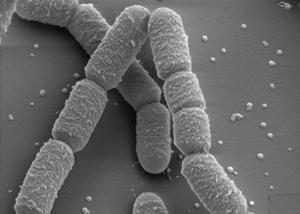Infrastructure protectionHumble bacteria help create self-healing concrete
Scientists use a ground-borne bacteria — bacilli megaterium — to create calcite, a crystalline form of natural calcium carbonate; this can then be used to block the concrete’s pores, keeping out water and other damaging substances to prolong the life of the concrete

Bacillus megaterium, the concrete-healing bacterium // Source: megabac.tu-bs.de
Scientists at Northumbria University are self-healing concrete which could see cracks in concrete buildings become a thing of the past.
A Northumbria University release reports that Dr. Alan Richardson, a senior lecturer in construction in the School of the Built and Natural Environment, is using a ground-borne bacteria — bacilli megaterium — to create calcite, a crystalline form of natural calcium carbonate. This can then be used to block the concrete’s pores, keeping out water and other damaging substances to prolong the life of the concrete.
The bacteria is grown on a nutrient broth of yeast, minerals, and urea and is then added to the concrete. With its food source in the concrete, the bacteria breeds and spreads, acting as a filler to seal the cracks and prevent further deterioration.
It is hoped the research could lead to a cost-effective cure for ‘concrete cancer’ and has enormous commercial potential.
While further research is needed, Richardson is hopeful that the repair mortar will also be effective on existing structures.
So-called “concrete cancer” may be caused by the swelling and breaking of concrete and is estimated to cost billions of pounds worth of damage to buildings.
Richardson said: “This project is hugely exciting. The potential is there to have a building that can look after itself.”
